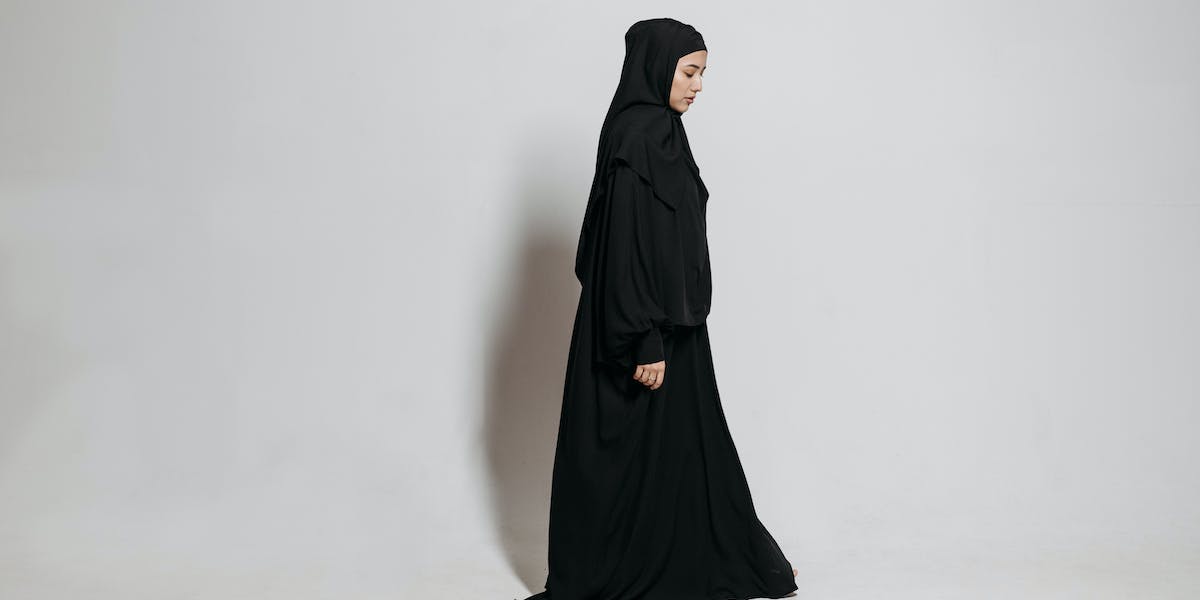Ihram is a sacred state that Muslim travelers enter and observe when performing the divine ceremonies of Hajj and Umrah, despite the popular belief that it is only a type of clothes. In order to reach this sacred environment, people must carry out certain cleansing rites and put on the proper clothes. It is not possible for a person to take part in the Hajj or Umrah pilgrimage without donning the Ihram.
Pilgrims who are men are required to cover one shoulder with two sets of white sheets, one covering their upper body and the other their lower body. Women’s ihram, on the other hand, calls for a loose robe that covers the entire body, ensuring total coverage at all times. Women don’t show their shoulders during Tawaf, in contrast to men. This difference in Ihram dress corresponds to the gender-specific rules followed on the holy pilgrimages of Umrah and Hajj.
Importance of Ihram in Islam
For those making the journey to Allah’s dwelling, the Ihram is a potent symbol of equality. Disparities based on money and social standing are eliminated, eliminating any propensity for self-admiration in both men and women.
The idea of equality is reinforced by the difficulty in differentiating between the wealthier and the less fortunate due to the simplicity and uniformity of Ihram. Ihram also acts as a moving reminder of the veil that will cover everyone of us upon our unavoidable departure from this life.
Steps of Wearing Ihram for Men
- Step 1: Make sure your legs are spread apart. Walking becomes more pleasant as a result after the Ihram is completely wrapped around you.
- Step 2: Holding a thick white fabric in front of you and the other half behind you, divide it in half and place it beside your body. Tuck it in your tummy and wrap it around your lower torso so that the two halves connect on the other side. This gives the appearance that the fabric is folded in half, enclosing your body in between the two pieces.
- Step 3: To make sure the material is snug around your body, hold the two sides together firmly at their meeting point. Ensure that the bottom of the fabric falls below your knees and the top is positioned well over your navel.
- Step 4: Hold onto the area that is pinched by your side firmly, then move the ends of the two parts forward and enclose them over your front abdomen.
- Step 5: Consider folding the long cloth back and forth multiple times. This ensures modesty by covering the front of your lower body with a thick layer.
- Step 6: You might wear a money belt or an Ihram belt around your waist for extra security. Just slide the belt on halfway, then finish the process by rolling the remaining material over the belt to ensure a tight fit.
- Step 7: After wrapping the Ihram around your lower body, secure it to prevent any slipping. While holding in your stomach, grasp the top of the wrapping (the highest part on your body) and start rolling and tucking it downwards. Once you’ve created a few tight folds, you can relax your stomach and continue rolling. Ensure your navel, including the belly button, remains covered. The Ihram should now be securely wrapped around your lower body, holding firm even if tugged.
- Step 8: Once the lower cloth is fastened, spread the upper one and grasp it horizontally behind your back, holding one corner in each hand. This stance is similar to getting ready to don a cape.
- Step 9: Lower the top left corner down to your right armpit. Using your left hand, bring the cloth over your shoulder towards the right armpit. This action ensures that your left shoulder is now covered.
- Step 10: Wrap one corner around your left shoulder, then use your right hand to bring the other side of the cloth back over your left shoulder. Ensure complete coverage of your entire left shoulder area, leaving the right shoulder bare. In some groups, men may opt to cover both shoulders. If you choose to do so, shift your right hand to your left armpit and securely wrap any loose ends around both shoulders, resembling a winter shawl. During Hajj and Umrah make sure to expose your right shoulder, which is known as Idtiba’a.
Steps of Wearing Ihram for Women
- Step 1: Talk about your sect’s view on women’s ihram with your imam. Different groups or sects may hold different opinions. For example, some may regard women’s ordinary daily clothing as ihram, while others may think a white cloth covering the head is sufficient. With the provision for sewing, several cultures allow women to wear the same two pieces of clothing as males. If you’re unsure, ask your imam for advice. Furthermore, before donning an ihram, women in some tribes could be expected to get their husband’s approval.
- Step 2: With one top corner in each hand, hold a single cloth horizontally in front of you. Maintain it at a level that is almost in line with your chest.
- Step 3: Wrap the cloth around the top of your armpits, creating a look similar to wearing a towel after a shower. Ensure your chest is covered, with no gaps between the ends of the cloth and your body. Some women choose to drape the cloth over one shoulder for additional security before securing it in place.
- Step 4: Secure the cloth in place using your preferred method – whether it’s pinning, tying, belting, or even stitching. Women have the flexibility to employ any of these methods to ensure their Ihram stays securely in position.
- Step 5: Place the second cloth over your head, ensuring the top center slightly covers your forehead, with one end in each hand. Alternatively, you can opt for pre-made Ihram cloths that come with a pre-sewn hole for your face. If you typically wear a burqa or niqab, it’s essential to remove it before putting on Ihram, as covering your face is not allowed. To maintain modesty, some women use dark sunglasses to partially conceal their faces during Ihram.
- Step 6: Make sure the material is securely wrapped over both of your shoulders by wrapping each end around the shoulder opposite you. While your hands should be visible, make sure your arms, shoulders, collarbones, hair, and neck are all well covered.
- Step 7: Use your preferred technique to secure the head cloth. You can decide whether to tie it, clip it, pin it, or stitch it for extra security.
Conclusion
In conclusion, wearing an Ihram during the Hajj and Umrah is a revered custom that represents the equality and modesty of Muslim travelers. This apparel, which conforms to gender norms, is more important than its outerwear. Men cover one shoulder, while different sects have different customs for women. Ihram is a moving symbol of our universal equality in Allah’s eyes. Pilgrims adhere to particular rituals, highlighting the sacredness of their travels and the respect for deeply held religious beliefs.
FAQ’s
Can Boxers Be Worn Under an Ihram?
Wearing sewn clothing—including boxers and any kind of undergarment—is forbidden while in the state of Ihram. During this holy time, pilgrims must follow these rules.
During the Hajj and Umrah, Do Women Wear Ihram?
Choose either white or black attire. Keep your hands and face uncovered. Opt for shoes that provide complete coverage for the entire foot.
What is Worn Beneath the Abaya during the Hajj and Umrah?
For performing Umrah, don a loose-fitting abaya over your regular clothes. Both black and white abayas are acceptable, but it’s recommended to avoid thin or colourful clothing underneath. The preference for a white abaya is due to the atmosphere of Makkah and Madinah.
Can I do Tawaf without Ihram?
Prior to undertaking Hajj or Umrah, wearing Ihram is a mandatory and essential practice for pilgrims. Neglecting this requirement renders the pilgrimage invalid, highlighting the crucial role Ihram plays in symbolizing the sacredness of the spiritual journey in accordance with Islamic traditions.
At Tawaf, is it Permissible to Wear Socks?
The tawaf should be performed with the right shoulder uncovered. Don’t wear underwear, socks or any other items, and don’t cover your head. Put on shoes that expose your toes and ankles.
Can I Wear another Ihram on Hajj?
You are not prohibited from taking off any clothing that you put on when you reach the state of Ihraam. Removing it does not imply that your Ihraam has come to an end. Because of this, according to the Ulama, we are allowed to change our Ihraam, or clothes, and even wash them if they get dirty.











